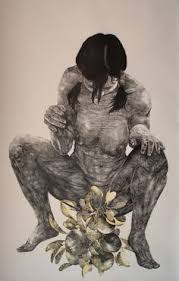All biological organisms know that physical life depends upon a constant transformation of consciousness and form. This biological knowledge is intimately acknowledged at microscopic levels. Even our cells know that their deaths are necessary for the continuation of our physical form.
The entire orientation is strange or alien only to our conscious belief systems. in one way or another, most people are aware of a desire for death before they die — a desire they usually do not consciously acknowledge. To a large measure, the sensations of pain are also the results of our beliefs, so that even diseases that are indeed accompanied, now, by great pain, need not be. Obviously, I am saying that “deadly” viruses do not “think of themselves” as killers, and more than a cat does when it devours a mouse. The mouse may die, and a cell might die as a result of the virus, but the connotations applied to such events are also the result of beliefs. In the greater sphere of spiritual and biological activity, the viruses are protecting life at their level, and in the capacity given them.
In one way or another, they are always invited in response to that greater rhythm of existence in which physical life is dependent upon constant transformation of consciousness and form.
The phase of death is, then, a part of life’s cycle. I have mentioned evolutionary experiments, as we think of evolution. There is a disease that I have read about recently, where the skin turns leathery after intense itching — a fascinating development in which the human body tries to form a leathery-like skin that would, if the experiment continued, be flexible enough for, say, seat pose and normal locomotion, yet tough enough to protect itself in jungle environments from the bites of many “still more dangerous” insects and snakes. Many such experiments appear in certain stages as diseases, since the conditions are obviously not normal physical ones. To some extent, cancer also represents a kind of evolutionary experiment. But all such instances escape us because we think of so-called evolution as finished.
Some varieties of our own species were considered by the animals as diseased animal species, so I want to broaden our concepts there. In the entire natural scheme, and at all levels — even social or economic ones — disease always has its own creative basis. Abnormalities of any kind in birth always represent probable versions itself — and they are kept in the gene pool to provide a never-ending bank of alternates.
There are all kinds of interrelationships. So-called Mongoloid children, for example, are reminders of man’s and woman’s purely emotional heritage, as separate from his or her intellectual achievements. They often appear more numerously in industrialized civilizations for that reason
The disease I referred to is Onchocerciasis, which is caused by a filarial parasite spread by the bite of the blackfly. Beside producing the gruesome leathery skin, Onchocerciasis can cause blindness — hence its common name, river blindness. This most serious affliction appears to be centered in West Africa, and infects many millions of people there. Four centuries ago, it was carried to the Western Hemisphere by slaves, and is now found in certain areas of Mexico, south to Brazil.
Onchocerciasis doesn’t kill, and the percentage of victims who lose their sight varies according to location. Perhaps in this biological experiment, the blindness represents an evolutionary dead end, in those terms.




